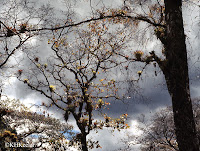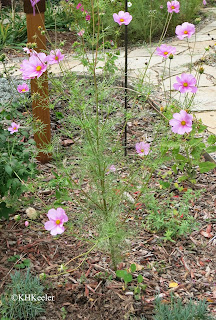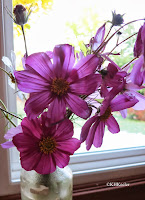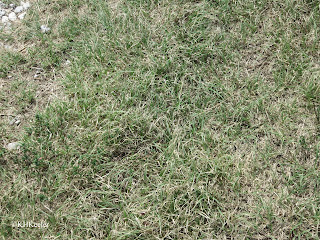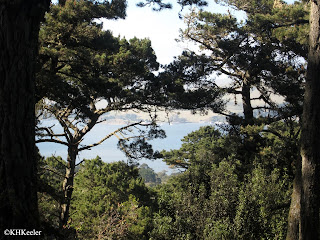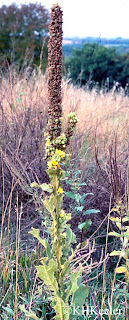I’m making a short video about the fact that the vegetables cabbage, broccoli, Brussels sprouts, cauliflower and kale are all botanically the same, Brassica oleracea (cabbage family, Brassicaceae). The oddest fact I plan to include is that in the 18th and 19th centuries, on the islands of Jersey and Guernsey in the English channel, the cabbages grew to 20' tall and their stalks were dried, varnished and used as walking sticks. LINK
People on the Channel Islands raised cattle as well as cabbages and broke off the big lower leaves to feed their cows. In the cool, moist climate--perfect for cabbage plants--the plants grew taller and taller, while people picked off more lower leaves. Since the growing season is long and the frosts light, the cabbage plants sometimes reached twenty feet tall, with big cabbage leaves at the top. They looked from a distance like palm trees.
The stems were pretty tough, so when the plant died, the resourceful islanders found a variety of uses for them. One was to dry, smooth, and varnish the cabbage stems and use them for canes or walking sticks.
Time and change has mostly eliminated both the giant cabbages and the walking stick industry, but they still make a few (Note: 2/1/21: having gained attention, Jersey residents are making more walking sticks. link)
 |
| Brussels sprouts |
I wanted to show a picture of the canes in the video but I wasn't sure about copyright issues on the pictures I found.











